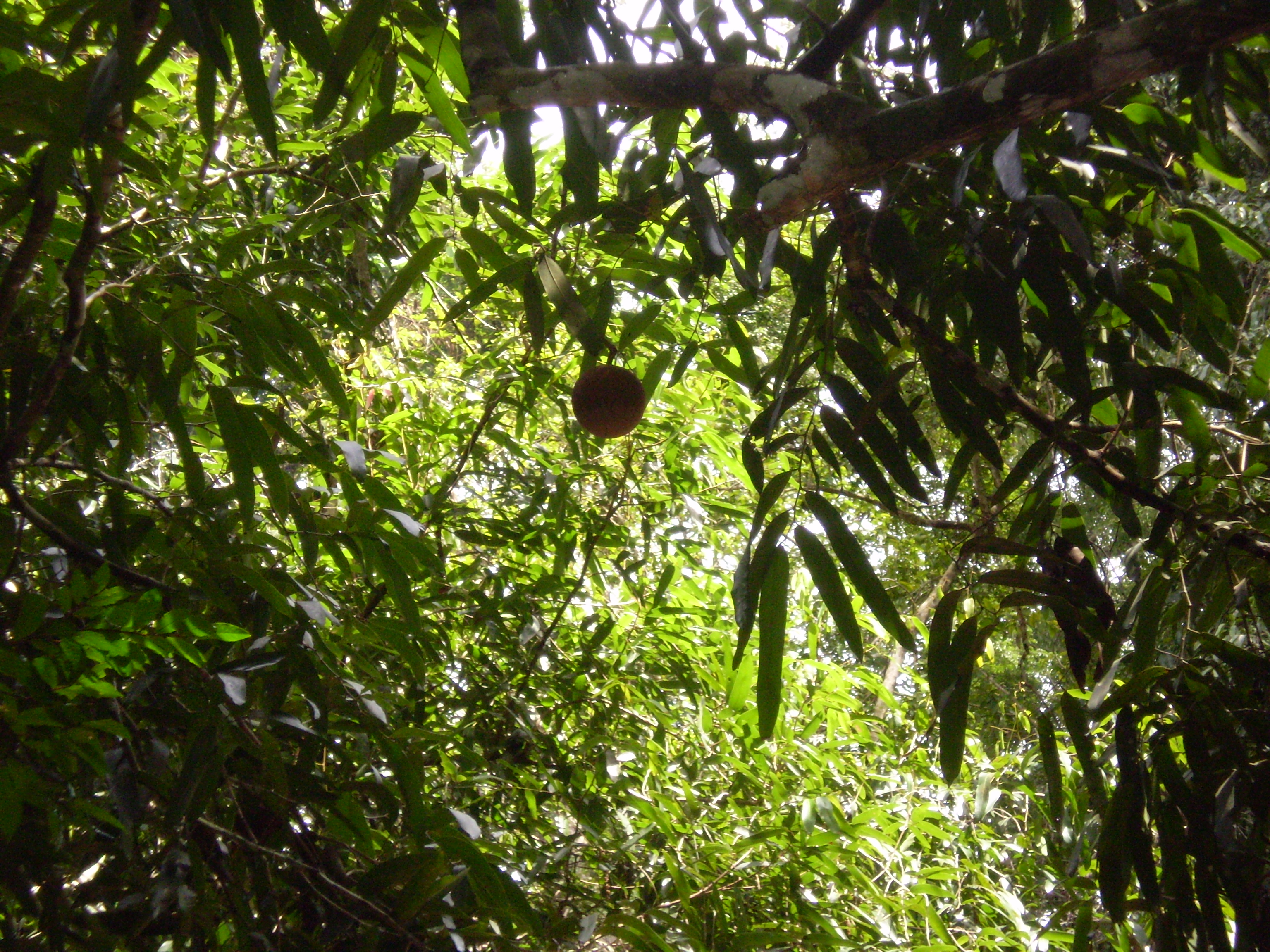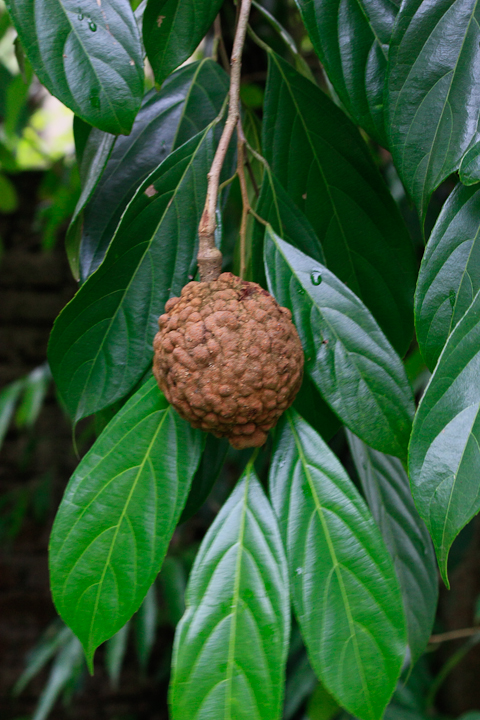Hydnocarpus wightiana seed oil on:
[Wikipedia]
[Google]
[Amazon]
''Hydnocarpus wightianus'' or chaulmoogra is a tree in the Achariaceae family. Hydnocarpus wightiana seed oil, ''Hydnocarpus wightiana'' seed oil has been widely used in traditional Indian medicine, especially in Ayurveda, and in Chinese traditional medicine for the treatment of leprosy. It entered early Western medicine in the nineteenth century before the era of Sulfonamide (medicine), sulfonamides and other antibiotics for the treatment of several skin diseases and leprosy. The oil was prescribed for leprosy as a mixture suspended in gum or as an emulsion.



 The oil from the seeds of ''Hydnocarpus wightianus'' (Chaulmoogra) has been widely used in various forms of traditional Indian medicine and in Chinese traditional medicine for the treatment of leprosy. The oil was introduced into England by Frederic J. Mouat and it was used in its raw form both as topical and internal medicine.
The chemical constituents of the oil were analyzed for their potential pharmacology, pharmacological activity by Frederick Belding Power, working for GSK plc, Wellcome Chemical Research Laboratories, in 1904. Power and colleagues isolated hydnocarpic acid, which had the formula
The oil from the seeds of ''Hydnocarpus wightianus'' (Chaulmoogra) has been widely used in various forms of traditional Indian medicine and in Chinese traditional medicine for the treatment of leprosy. The oil was introduced into England by Frederic J. Mouat and it was used in its raw form both as topical and internal medicine.
The chemical constituents of the oil were analyzed for their potential pharmacology, pharmacological activity by Frederick Belding Power, working for GSK plc, Wellcome Chemical Research Laboratories, in 1904. Power and colleagues isolated hydnocarpic acid, which had the formula C16H28O2 , from seeds of both the ''Hydnocarpus Wightiana'' and ''Hydnocarpus anthelmintica'' trees. They introduced the extract into medical usage until sulfones and antibiotics become more dominant in the treatment of several skin diseases and leprosy.
 Chaulmoogra oil was commonly used in the early 20th century for the treatment of leprosy. It was applied topical medication, topically (which was ineffective) or taken internally (more effective but nausea, nauseating and often rejected by people as worse than leprosy). The ingredient that appears to produce antimicrobial activity is hydnocarpic acid, a lipophilic compound. It may act by being an Antagonist (pharmacology), antagonist of biotin. American researcher Victor Heiser worked on developing a method of using the oil against leprosy by intravenous or intramuscular injection.
An ethyl ester of the oil (the "Ball method") was developed by Alice Ball in 1916, who died suddenly before publishing the technique. Her work was stolen by Arthur L. Dean who began producing large quantities of the treatment and named it after himself.
It was then produced and marketed by Burroughs Wellcome (modern GlaxoSmithKline) in the early 1920s. The oil preparations were used intravenously for lepers. The oil was often obtained directly from trees in India, Sri Lanka or Africa. Doctors would locally prepare ethyl esters for treatments. In June 1927, Burroughs Wellcome released the commercial preparation sodium hydnocarpate marketed as ''Alepol'' which produced few unpleasant side effects. In May 1928, doctors reported cure of leprosy in some people treated with Alepol. In the 1940s, chaulmoogra oil was replaced by the more effective sulfones.
Chaulmoogra oil was commonly used in the early 20th century for the treatment of leprosy. It was applied topical medication, topically (which was ineffective) or taken internally (more effective but nausea, nauseating and often rejected by people as worse than leprosy). The ingredient that appears to produce antimicrobial activity is hydnocarpic acid, a lipophilic compound. It may act by being an Antagonist (pharmacology), antagonist of biotin. American researcher Victor Heiser worked on developing a method of using the oil against leprosy by intravenous or intramuscular injection.
An ethyl ester of the oil (the "Ball method") was developed by Alice Ball in 1916, who died suddenly before publishing the technique. Her work was stolen by Arthur L. Dean who began producing large quantities of the treatment and named it after himself.
It was then produced and marketed by Burroughs Wellcome (modern GlaxoSmithKline) in the early 1920s. The oil preparations were used intravenously for lepers. The oil was often obtained directly from trees in India, Sri Lanka or Africa. Doctors would locally prepare ethyl esters for treatments. In June 1927, Burroughs Wellcome released the commercial preparation sodium hydnocarpate marketed as ''Alepol'' which produced few unpleasant side effects. In May 1928, doctors reported cure of leprosy in some people treated with Alepol. In the 1940s, chaulmoogra oil was replaced by the more effective sulfones.
Pubs.acs.org
{{Taxonbar, from=Q2961600 Hydnocarpus, wightianus Plants used in Ayurveda Plants used in traditional Chinese medicine
Common names
Common name: Jangli almond * Hindi: कालमोगरा Calmogara, Chalmogra, Chaulmoogra, Jangli badam * Kannada: Chalmogra yenne mara, Mirolhakai, Surti, Suranti, Toratti, Garudaphala * Malayalam: Kodi, Maravatty, Marotti, Nirvatta, Nirvetti * Marathi language, Marathi: Kadu Kawath * Sanskrit: Tuvaraka, Turveraka, Tuvrak, कुष्टवैरी Kushtavairi * Tamil language, Tamil: Maravetti, Maravattai, Marotti * Telugu language, Telugu: Niradi-vittuluHabitat
In India: It grows in tropical forests along western Ghats, along the coast from Maharashtra to Kerala, Assam, Tripura, often planted on road sides in hilly areas. Other countries: The tree is found in South East Asia, chiefly in the Indo-Malayan region, and cultivated in Sri Lanka, Nigeria and Uganda.SEA HandBook, 2009 by the Solvent Extractors' Association Of IndiaMorphology
This is a semi-deciduous tree which grows up to tall. Bark is brownish, fissured; blaze pinkish. Branch lets are round, minutely velvet-hairy. Leaves are simple, alternate, carried on long stalks. Leaves are , usually oblong to elliptic-oblong, tip long-pointed, often falling off, base narrow, margin toothed, papery, hairless. Midrib is raised above, secondary nerves 5–7 pairs. Its flowers have greenish white petals and are borne in short cyme (botany), cymes or racemes, or sometimes appear by themselves in leaf axils. The flowering takes place from to January to April. Its berries are woody, round, tomentose, about in diameter, and start off black when young but become brown when they mature. They have numerous seeds. Trees of the species that yield Chaulmoogra oil grow to a height of and in India trees bear fruits in August and September. The fruits are ovoid some in diameter with a thick woody rind. Internally they contain 10–16 black seeds embedded in the fruit pulp. The seeds account for some 20% of the fruit weight. A typical tree produces of seed/annum. The kernels make up 60–70% of the seed weight and contain 63% of pale yellow oil (mukherjee).Chaulmoogra oil


 The oil from the seeds of ''Hydnocarpus wightianus'' (Chaulmoogra) has been widely used in various forms of traditional Indian medicine and in Chinese traditional medicine for the treatment of leprosy. The oil was introduced into England by Frederic J. Mouat and it was used in its raw form both as topical and internal medicine.
The chemical constituents of the oil were analyzed for their potential pharmacology, pharmacological activity by Frederick Belding Power, working for GSK plc, Wellcome Chemical Research Laboratories, in 1904. Power and colleagues isolated hydnocarpic acid, which had the formula
The oil from the seeds of ''Hydnocarpus wightianus'' (Chaulmoogra) has been widely used in various forms of traditional Indian medicine and in Chinese traditional medicine for the treatment of leprosy. The oil was introduced into England by Frederic J. Mouat and it was used in its raw form both as topical and internal medicine.
The chemical constituents of the oil were analyzed for their potential pharmacology, pharmacological activity by Frederick Belding Power, working for GSK plc, Wellcome Chemical Research Laboratories, in 1904. Power and colleagues isolated hydnocarpic acid, which had the formula Physical characteristics and composition
The oil is semi-solid at room temperature with no odor. Gas–liquid chromatography analysis has shown the oil to contain the following fatty acids – hydnocarpic acid, chaulmoogric acid, gorlic acid, lower cyclic homologues, myristic acid, palmitic acid, stearic acid, palmitoleic acid, oleic acid, linoleic acid and linolenic acid. The oil is unusual in not being made up of straight chain fatty acids but acids with a cyclic group at the end of the chain. The oil also contains 5'-Methoxyhydnocarpin, 5′-methoxyhydnocarpin, an amphipathic weak acid, and isohydnocarpin. The crude oil has a pale greenish-brown color, and can be easily purified into a white, watery oil containing three cyclopentene fatty acids. Table: fatty acid composition of oil Table of physical properties of oilExtraction
Seeds are ovoid, irregular and angular, 1 to 1 1/4 inches long, 1 inch wide, skin smooth, grey, brittle; kernel oily and dark brown. A fatty oil is obtained by expression, known officially as ''gynocardia oil'' in Britain, as ''oleum chaulmoograe'' in the United States. Fruits are plucked by climbing the tree or using long sticks with a sickle tied to it. The fruits are peeled by knife and the seeds are washed in water and then dried in sun. Seeds are decorticated (dehusked) by mallet, hand hammer, or decorticator. They may also be crushed in an expeller and rotary. The kernels yield 43% oil. The extracted oil is stored in zinc barrels until exported.SEA HandBook, 2009 by the Solvent Extractors' Association Of IndiaLeprosy
 Chaulmoogra oil was commonly used in the early 20th century for the treatment of leprosy. It was applied topical medication, topically (which was ineffective) or taken internally (more effective but nausea, nauseating and often rejected by people as worse than leprosy). The ingredient that appears to produce antimicrobial activity is hydnocarpic acid, a lipophilic compound. It may act by being an Antagonist (pharmacology), antagonist of biotin. American researcher Victor Heiser worked on developing a method of using the oil against leprosy by intravenous or intramuscular injection.
An ethyl ester of the oil (the "Ball method") was developed by Alice Ball in 1916, who died suddenly before publishing the technique. Her work was stolen by Arthur L. Dean who began producing large quantities of the treatment and named it after himself.
It was then produced and marketed by Burroughs Wellcome (modern GlaxoSmithKline) in the early 1920s. The oil preparations were used intravenously for lepers. The oil was often obtained directly from trees in India, Sri Lanka or Africa. Doctors would locally prepare ethyl esters for treatments. In June 1927, Burroughs Wellcome released the commercial preparation sodium hydnocarpate marketed as ''Alepol'' which produced few unpleasant side effects. In May 1928, doctors reported cure of leprosy in some people treated with Alepol. In the 1940s, chaulmoogra oil was replaced by the more effective sulfones.
Chaulmoogra oil was commonly used in the early 20th century for the treatment of leprosy. It was applied topical medication, topically (which was ineffective) or taken internally (more effective but nausea, nauseating and often rejected by people as worse than leprosy). The ingredient that appears to produce antimicrobial activity is hydnocarpic acid, a lipophilic compound. It may act by being an Antagonist (pharmacology), antagonist of biotin. American researcher Victor Heiser worked on developing a method of using the oil against leprosy by intravenous or intramuscular injection.
An ethyl ester of the oil (the "Ball method") was developed by Alice Ball in 1916, who died suddenly before publishing the technique. Her work was stolen by Arthur L. Dean who began producing large quantities of the treatment and named it after himself.
It was then produced and marketed by Burroughs Wellcome (modern GlaxoSmithKline) in the early 1920s. The oil preparations were used intravenously for lepers. The oil was often obtained directly from trees in India, Sri Lanka or Africa. Doctors would locally prepare ethyl esters for treatments. In June 1927, Burroughs Wellcome released the commercial preparation sodium hydnocarpate marketed as ''Alepol'' which produced few unpleasant side effects. In May 1928, doctors reported cure of leprosy in some people treated with Alepol. In the 1940s, chaulmoogra oil was replaced by the more effective sulfones.
See also
*Trees of IndiaReferences
External links
Pubs.acs.org
{{Taxonbar, from=Q2961600 Hydnocarpus, wightianus Plants used in Ayurveda Plants used in traditional Chinese medicine